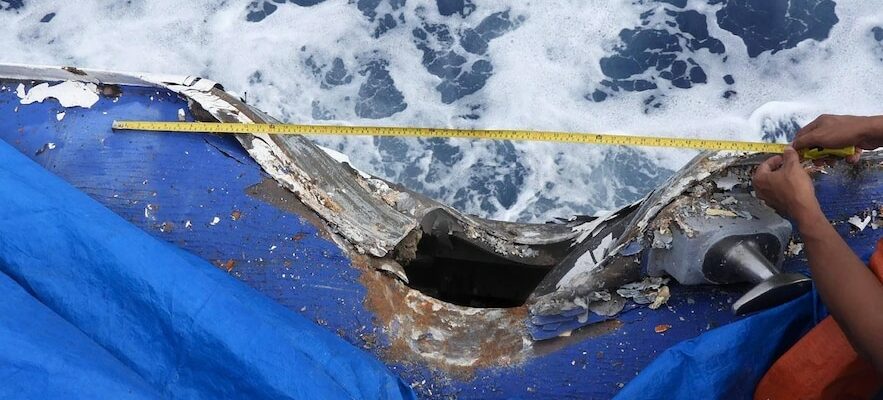After nearly five months firmly anchored to the Sabina Atoll, the Philippine Coast Guard’s flagship, the BRP Teresa Magbanu, reluctantly weighed anchor on Sunday, September 15. Anchored on the coast of this islet in the South China Sea since last April, it served as a physical claim by the Philippine government against China, which is disputing control of the area. A violation of Chinese territorial integrity, according to the Beijing regime, which, after an attempt to quasi-siege the atoll, is now doubling its aggressiveness in its approach, despite warnings from the United States.
Located 140 kilometers west of the Philippine island of Palawan, and about 1,200 kilometers from the island of Hainan, the nearest Chinese territory, this reef is part of the slew of islets in the South China Sea claimed by Beijing against other coastal countries, such as the Philippines, Vietnam, Brunei and Malaysia.
Just weeks after a deal was finally struck between China and the Philippines for another atoll, Second Thomas, Sabina has become the new flashpoint of tensions between Manila and Beijing. The strategic location is attracting covetousness for its proximity to the Reed Bank, considered rich in oil and gas. But also because it is the main stopover for resupply missions for Second Thomas, and a waypoint for ships sailing towards the Philippine island of Thitu, inhabited by about 400 civilians.
Increased presence of China
According to the Philippines, the Sabina and Second Thomas Shoals are within its exclusive economic zone (EEZ), which gives it special construction rights in the area. An argument rejected by China, which claims much of the South China Sea as its own, despite a ruling by the international tribunal in The Hague to the contrary. Since April, China has gradually increased its presence on the shoal, with between two dozen and 40 vessels present at any one time, according to the British daily The Guardian.
And it has made it its mission to make the Filipino presence on the island unbearable. “After more than five months at sea, where it fulfilled its sentinel duties, the BRP Teresa Magbanua is returning to its home port, mission accomplished,” the National Maritime Council and executive secretary of the Philippine presidency finally resigned itself this Sunday. A departure forced by Chinese pressure. “During its deployment, it faced an encirclement by a flotilla in excess of intruders, and its crew had to live with food shortages,” the Philippines denounced in a statement. The previous month, Chinese boats had blocked a resupply mission to Filipino sailors.
Clashes that could degenerate
The flag’s departure was immediately seized upon as an opportunity for China to reassert its “indisputable sovereignty” over the coveted reef. “We sternly warn the Philippines to stop encouraging propaganda and risking violations,” the Chinese spokesman warned, accusing Manila of having “seriously trampled on China’s territorial sovereignty and seriously undermined regional peace and stability.”
Photo released by the Philippine Coast Guard on August 19, 2024, showing damage to the BRP Cape Engano vessel after a collision with a Chinese vessel in the South China Sea
© / afp.com/Handout
Considered by the regime as “in waters under Chinese jurisdiction”, the Sabina reef will continue to be the subject of “activities to protect rights and maintain public order”, Beijing promised. In recent months, the tension in the area has been such that this paradise atoll has been transformed into a naval battlefield. In August, Chinese and Philippine ships even collided twice near Sabina.
“This growing series of incidents has prompted warnings that a misjudgment at sea could inadvertently escalate into armed conflict. That could risk drawing the United States, an ally of the Philippines, into a confrontation with China,” the court ruled today. The Guardian. Last April, US President Joe Biden already promised China a very serious response in the event of an escalation. “Any attack on a Philippine aircraft, ship or armed forces in the South China Sea would trigger the implementation of the mutual defense treaty,” he said.
